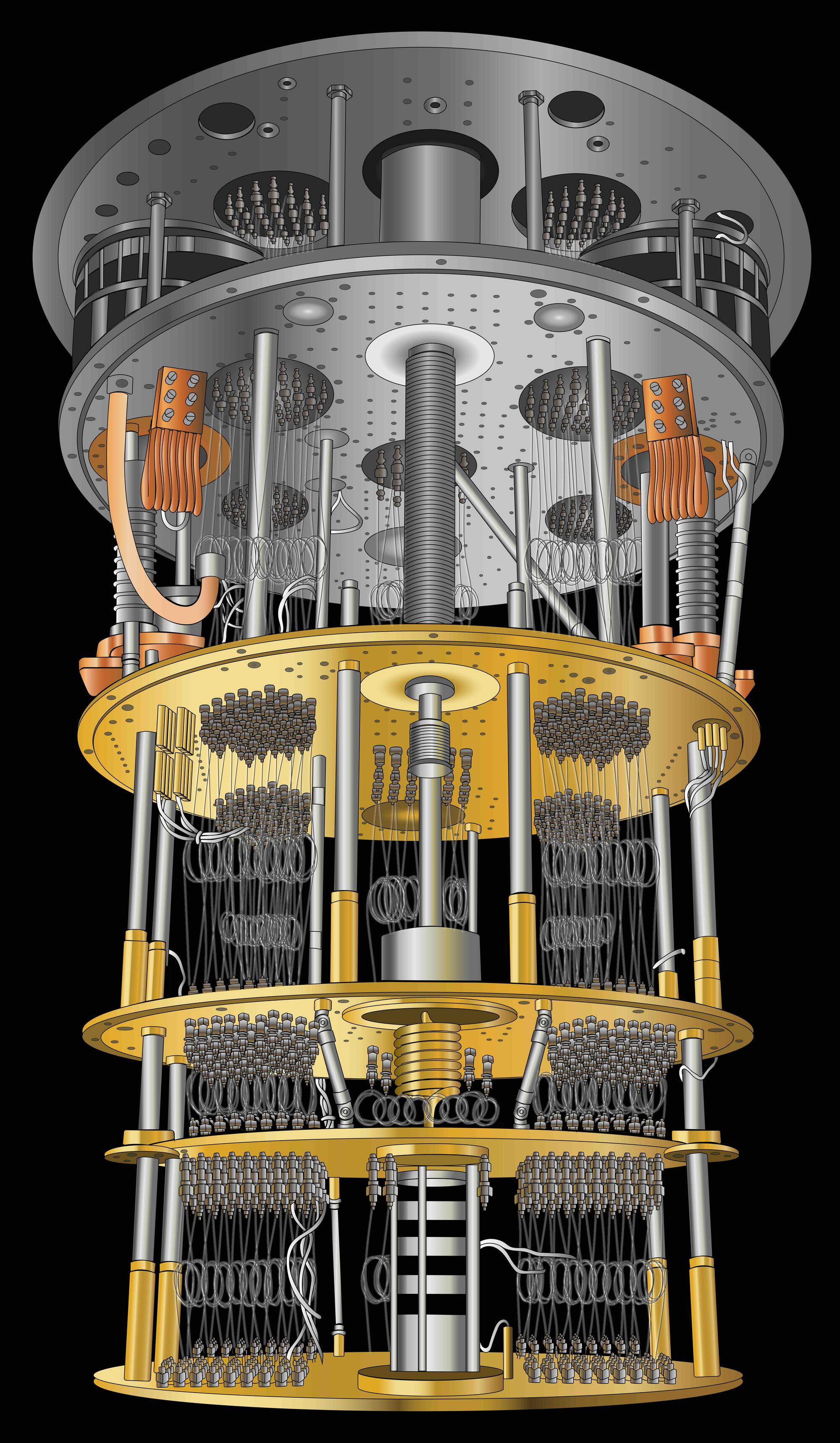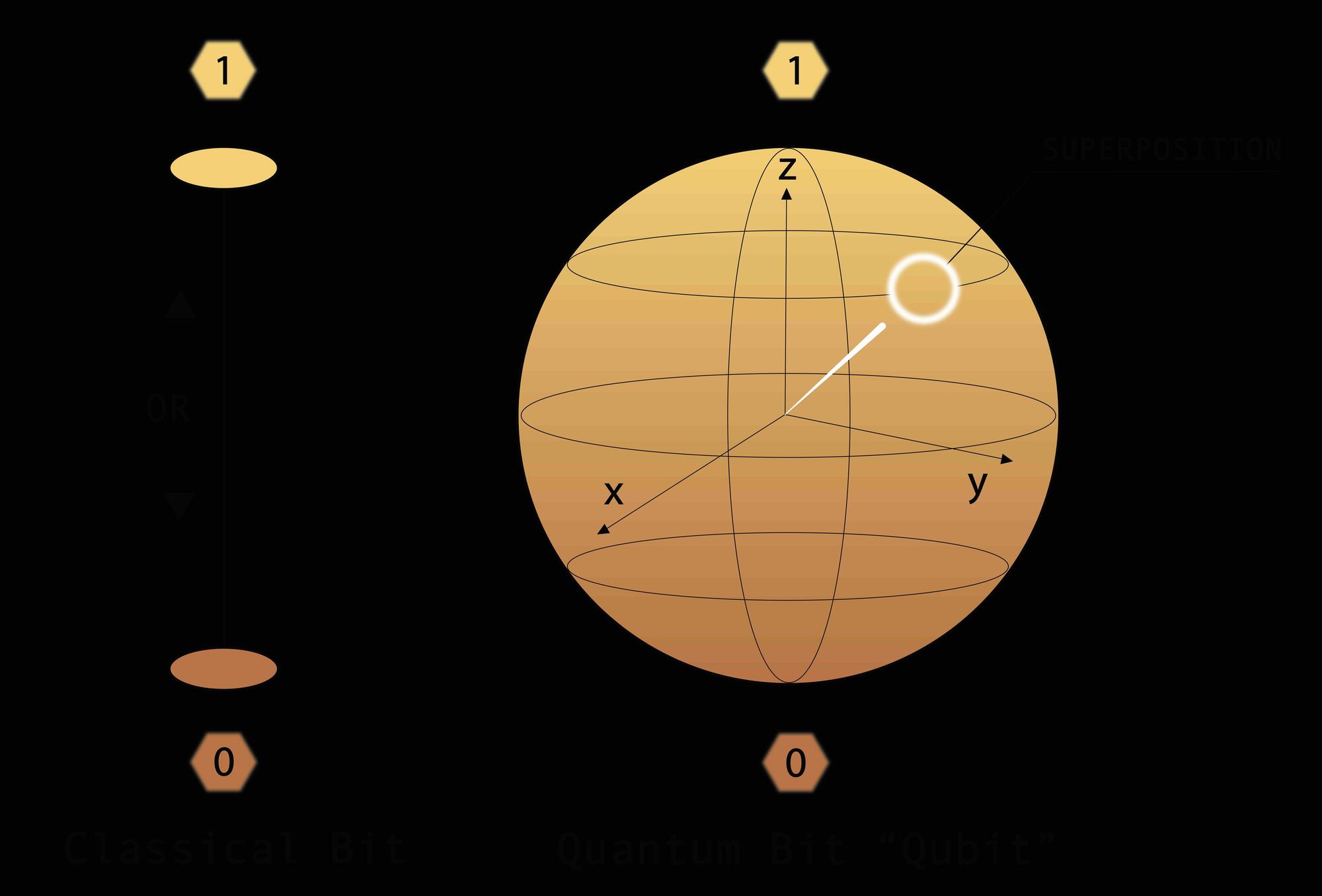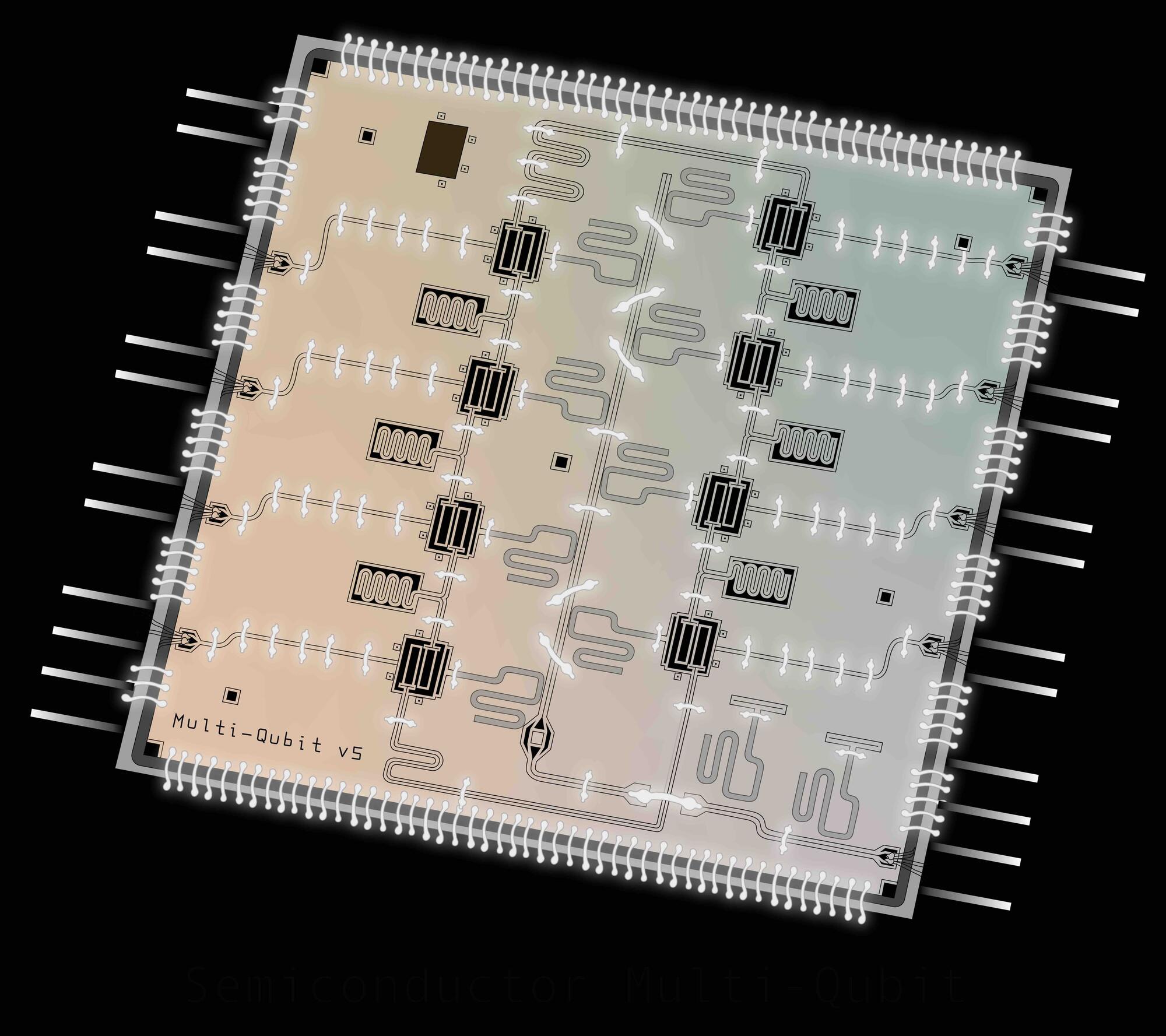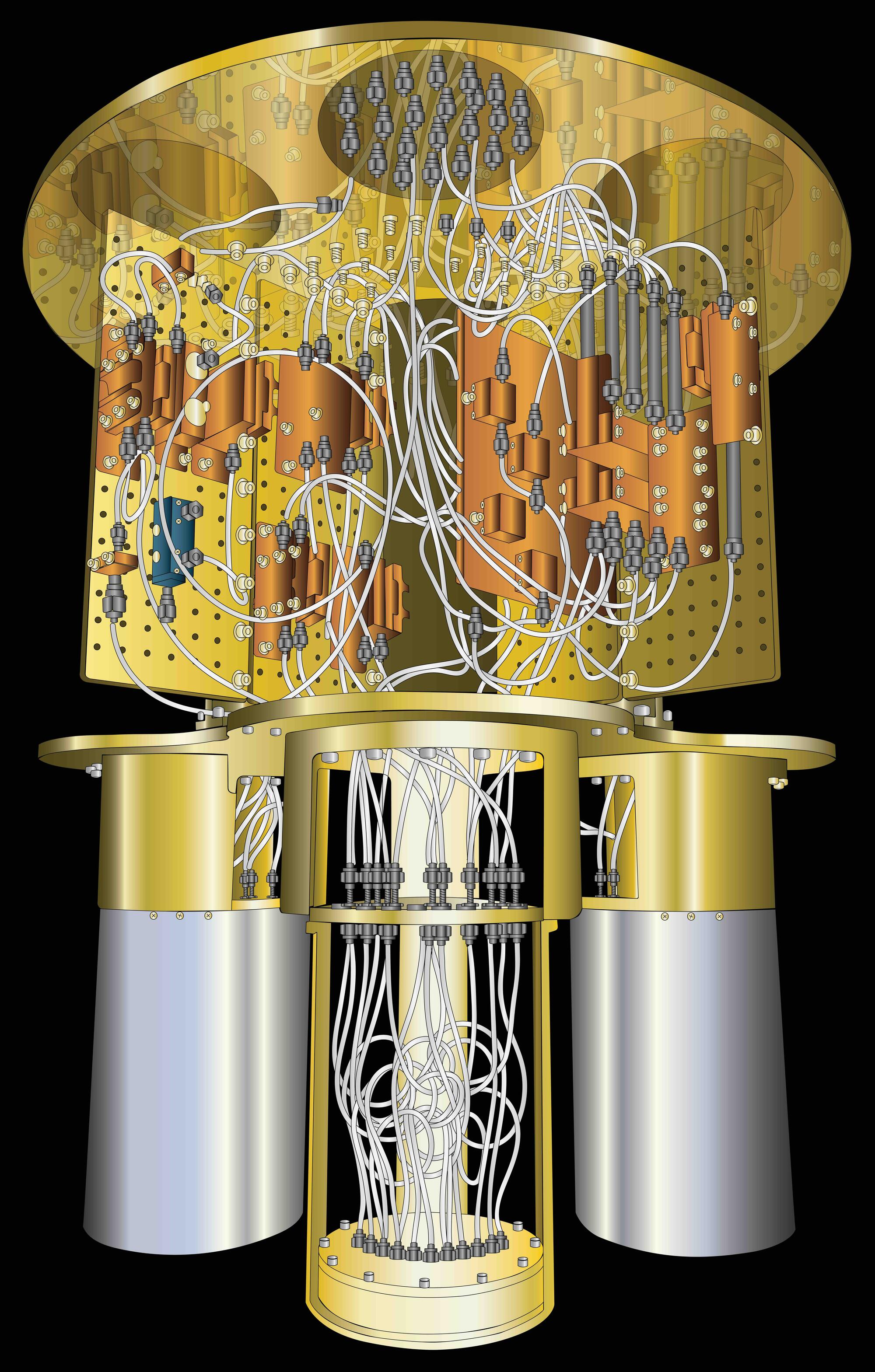Teamwork makes the machine work
Don't sleep on the Advanced Quantum Testbed

In November 1945, some of the greatest engineers and scientists of their generation stood in a room at the Ballistic Research Laboratory in Aberdeen, Maryland, and stared at a room-sized machine. This machine—which they had just built—was the first electronic computer. The Electronic Numerical Integrator and Computer, or ENIAC, consisted of 40 panels filled with 18,000 vacuum tubes and 1,500 electronic relays. That’s 18,000 more vacuum tubes than your iPhone has today, yet this mammoth was its ancestor.
These two machines, the ENIAC and the iPhone, are separated by generations, but 60 years seems a miniscule period for such incredible progress. One crucial factor in the rapid development from ENIAC to iPhone is that in 1943 those engineers in Aberdeen had already delivered the proof of concept for a fundamental breakthrough—electrical signals are ridiculously fast. Electricity can transmit information so much faster than any mechanical device or human hand that the potential increase in speed promised by an electronic computer was nearly infinite compared to the common calculational devices of the time. Whatever the cost, whatever the effort, the potential would be worth the investment. It would be worth it for the generations of scientists, engineers, and entrepreneurs who came after the ENIAC to continue to improve on the way we manipulate electrical signals, ultimately arriving at the incredible and essential computers we have today.
But the stage we are at now in the development of the computer is perhaps close to the end. Devices have become faster and more powerful in the past in part because engineers have continued to find ways to pack more and more transistors—the components in a computer that act like switches—onto a single computer chip. However, transistors today are approaching an atomic scale at which the laws of physics will soon allow no further shrinkage. While engineers have already attained staggering heights in computational performance, computational challenges remain for even the most powerful supercomputers.
One of the problems that current computers can’t solve is the simulation of nature at its most fundamental level. Our best understanding of the physical world is through quantum mechanics, which says that a system cannot be described through definite variables like the positions of various particles, but rather a function that provides the probability for every possible arrangement of all the particles. Accounting for every possibility of a complex system —like the photosystems of a plant—requires such vast calculations that representing and manipulating it on current computers is infeasible. Instead, scientists approximate to describe these types of systems. But, if we want to apply our computational resources to understand the fundamental workings of nature, we must pursue novel avenues for how we store and manipulate information. One such avenue is to leverage quantum mechanics in the hardware itself by building devices called quantum computers.
Taking Computers to the Quantum Realm
On an unexpectedly brisk July morning, I sat down with Dr. Ravi Naik and Dr. Kasra Nowrouzi at a picnic table just outside their lab on the UC Berkeley campus. Dr. Naik and Dr. Nowrouzi are two of the principal research scientists working at the Advanced Quantum Testbed (AQT), a multidisciplinary project organized through Lawrence Berkeley Laboratory (LBL) and directed by Professor Irfan Siddiqi. AQT seeks to form collaborations between industry and academia to advance both the hardware and software used in quantum computing. Their work could one day lead to computational devices that can efficiently simulate the types of complex systems that are out of reach for today’s best supercomputers. To accomplish this task, they are not seeking to increase the processing speeds of the computers we have today, but rather to build machines capable of manipulating information in a fundamentally different way.
At its core, a computer like the ENIAC or your iPhone has the capability to do a few simple operations. It can translate an external input—for instance, clicking on the TikTok app—into a string of ones and zeros and then store that string. Based on further input—say, scrolling past a boring video—it can change the first string into a new string of ones and zeros. And finally, based on that new string, it can show you a new video of a dog hula-hooping on a unicycle. Although this explanation is oversimplified, it captures the essence of what a computer is. A computer stores information in bits—-objects capable of two states, zero and one—and it manipulates this information by transforming old strings of bits into new strings of bits.
A quantum computer operates in the same way as a regular computer, but with the crucial difference that rather than bits, qubits represent its information. Qubits are quantum mechanical systems that, much like bits, have only two relevant states, which you can think of as zero and one. However, while bits can only be in state zero or in state one, the quantum nature of qubits allows them to be in any mixture of zero and one. Such mixed states are called superpositions. Not only can a single qubit be in a superposition, but a string of qubits, each potentially in superposition, can be manipulated in concert to create a vast number of complex states which quantum scientists refer to as entangled. The complexity of these entangled states allows a quantum computer to tackle hard problems in ways that are simple to execute on quantum hardware but would require a huge number of operations to replicate on a classical computer. This increased complexity can be used to simulate other quantum systems, and it can also be used for difficult mathematical problems that would take an impractical amount of time to solve on a standard computer.
To give a concrete example, consider searching through a giant dataset for a particular value. If you have no information about the way the data is ordered, then the best you could do is select one value at a time until you find the one for which you are searching. However, in 1996, computer scientist Lov Grover showed that, if your data were stored as qubits, a quantum computer could theoretically overcome this limitation and manipulate all the qubits at once to solve the problem of searching a disordered set much faster than is thought to be possible classically. If your data set were 10 billion items long, the speedup a quantum computer could give would be on the order of 100 thousand. To boot, that type of increase in speed doesn’t even touch the theoretical potential of quantum computers for certain problems. Algorithm developers for this novel hardware predict that for many problems, including simulations of nature, quantum computers can speed up calculations exponentially.

A “Nexus” Between Academia and Industry
Many theoretical discoveries about quantum computers occurred in the 1990s. However, quantum supremacy, a quantum computer’s ability to perform certain tasks substantially faster than a classical computer, has only been demonstrated recently. While the first demonstration of quantum supremacy occurred in 2019 and was celebrated as a landmark victory for researchers in the field, the task the quantum computer performed was arguably contrived and did not provide that much practical use. It remains the case today that quantum computers are not widely used except by the people who are trying to build them. However, their limited use is not necessarily foreshadowing that they are useless—the only people using electronic computers in 1943 were the people building the ENIAC, and 80 years later they are essential.
Dr. Ravi Naik, AQT’s head of measurement, illustrated the challenge of building a quantum computer by discussing the fragility of the information that they process. “Qubits are sensitive to the noise in the environment that interacts with them,” Dr. Naik explained, adding that a primary focus at AQT was “on both reducing the noise in the qubits’ environment and reducing our qubits’ sensitivity to noise when performing computations.” Even when all looks calm to a human eye, there can be an incredible amount of motion and interaction on the microscopic scale. Air molecules are darting back and forth. The lattices of atoms in solids are vibrating incessantly, and photons—particles of light—are speeding every which way, either scattering off or being absorbed by the substances they bump into. All of this “noise” can be a problem for qubits because it does not take much interaction with the environment to significantly alter a qubit’s superposition. Because temperature controls the degree to which this random motion occurs in the environment, engineers of quantum computers put a tremendous amount of effort into keeping the qubits as cold and as isolated as possible. At AQT, researchers hold their qubits under vacuum, in cryogenic refrigerators just a fraction of a degree above absolute zero. This essentially eliminates any effect that air molecules might have on the qubits and significantly decreases noise in general. But the scientists must still worry about several sources of noise, including impurities in their physical hardware that can have unwanted interactions with electrical signals as well as stray photons. As Dr. Naik and Dr. Kasra Nowrouzi, the head of hardware at AQT, showed me around their lab, they lamented the fact that even cosmic rays—streams of fast-moving, subatomic particles coming from outer space—might contribute to noise that would affect a quantum computer. Right after that, we moved into the basement portion of their lab, where we could be at least a little safer from the disruptions of the cosmos.
In the basement, Dr. Naik and Dr. Nowrouzi showed me their largest and newest quantum computer. Refrigerated and encased in protective metal shielding, the imposing machine hung from the ceiling and occupied a portion of the room not quite equal to ENIAC, but certainly close. The researchers explained that their lab works on the “full stack” of quantum information processing, and beside the computer was quite literally a stack of devices necessary to communicate with the quantum machine. They explained that these devices are used to interface with the quantum computer and read out results. However, every interaction and connection one makes with the quantum computer decreases the degree to which it is isolated and thus increases the effect that environmental noise can have.

“A Virtuous Cycle”
When every piece of the quantum computer and the classical interface must be vigilantly monitored and precisely tuned, building and maintaining even a relatively simple quantum computing device can be incredibly time consuming and difficult. Dr. Naik explained that “a real challenge for new QIS [Quantum Information Science] research labs is the equipment overhead required to get these experiments off the ground.” The myriad moving parts involved in building and testing a quantum computer also require a specific intersection of expertise that can be difficult to find. The necessity for interdisciplinary expertise is one of the reasons why Dr. Nowrouzi feels that “Berkeley is indeed an ideal place to work on quantum computing.” He highlighted that collaborations among an array of divisions within LBL “have enabled us to address every slice of the quantum computing problem.”
Even though quantum computers remain in an early stage of research and development, tech companies like Google and IBM are already in some ways leaders in the field, pushing to build the largest and most capable devices. According to the Wall Street Journal, Google plans to build a machine with one million qubits by 2029. Current machines have on the order of 10-100 qubits, but extravagant ambition is, of course, commonplace in the world of tech. One million qubits may be enough to simulate complex quantum mechanical systems in nature. IBM has developed an open-source package that allows one to write programs for their quantum computer and offers access through the cloud to academics and researchers in industry who wish to run programs directly on their hardware. Researchers at AQT are also ambitious and excited about the near-term future of quantum computing, seeing the path forward as collaborative and transparent. Like IBM, AQT also offers up its resources to the community at large, but their collaborations go much further than access on the cloud. Companies or academic groups can submit proposals to develop and run experiments on LBL’s hardware in full collaboration with the researchers at AQT.
One productive collaboration has been with the Quantum Engineering Solutions division (formerly Quantum Benchmark) at Keysight Technologies. Dr. Sam Ferracin, a software engineer at Keysight, works on the team, which develops methods to characterize and suppress errors that arise from noise in quantum devices. Working with researchers at LBL, the Quantum Benchmark team demonstrated two novel tools to suppress noise on a quantum computer. Dr. Ferracin explained, “Collaborating with the LBNL team helped me better understand the challenges that arise when operating a quantum computing device, which is very important for someone doing my job,” highlighting the potential benefits of close communication between those who work mainly with the software and those who are actively building the hardware. Several other collaborations between Keysight and LBL remain active today.
Referring to collaborations like the one with Quantum Benchmark, as well as others, Dr. Nowrouzi described a “virtuous cycle” of research propelled by the Advanced Quantum Testbed. “When we help our users develop these new scientific and technological innovations, these powerful tools become immediately embedded into our platform at AQT, making it even more powerful than before. This then enables us to accept and run even more difficult user projects, and attracts more and more interesting proposals,” Dr. Nowrouzi explained. He argued that this cycle was the “result of the unique positioning of the AQT as a central nexus at the crossroads of academia, industry, and national labs.” A cycle like this also changes the typical career path of a quantum information scientist. Dr. Ferracin pointed out that, “up until a few years ago, a graduate student who wanted to keep working on quantum technologies would have had limited options outside of academia. On the contrary, today’s graduate students have plenty of opportunities to be hired by quantum computing start-ups and companies, as well as to pursue an academic career.”

Big Ideas, Black Holes, and Managing the Hype
Both Dr. Nowrouzi and Dr. Naik are optimistic and excited for the future of their field. Dr. Nowrouzi highlighted a recent collaboration between AQT and a group at Fermi National Lab that aided the development of a system for controlling qubits, which has been made available to the public free of charge. Dr. Nowrouzi noted that “more than ten of the quantum computing talks at this year’s APS [American Physical Society] March Meeting involved science carried out using these open-source control systems,” and predicted that “this number is only going to increase at an accelerated pace going forward.” Looking toward the future of quantum information science, Dr. Naik pointed out that while many efforts at the AQT focused on preventing errors due to noise, the ultimate path forward for quantum computing lies in quantum error correction. Qubits are so sensitive that no effort at suppressing noise will ever be enough for truly large-scale applications. Thus, as Dr. Naik put it, the quantum information community needs to “build redundancy into our quantum systems to make them robust to noise.” This would involve a scheme in which a single qubit’s information is encoded onto multiple physical qubits. While this method may realize exponential increases in computational speed, it requires many more physical resources than most current devices have to offer. “When the quantum information community achieves working QEC [Quantum Error Correction], then the capabilities of quantum computers will really take off,” Dr. Naik predicted.
In addition to quantum error correction, out-of-the-box ideas might be necessary to push quantum computing into a new era. One such idea is a “qutrit,” a unit of information like a qubit that involves superpositions between three states instead of just two. “This can provide an efficient method of performing more extensive computations and simulations without needing additional resources,” Dr. Naik explained. This added complexity might make it easier for scientists to understand how information in a quantum system can become “scrambled” due to strong interactions among many different components. Dr. Naik described “information scrambling” as a process in which “information initially localized in a specific area is rapidly propagated throughout the entire system.” A team at AQT just demonstrated how quantum information can be scrambled and how the degree of this scrambling can be measured in a qutrit system. The mechanism and the speed at which information can be scrambled in a quantum system is interesting to scientists, in part because it can illustrate what happens quantum mechanically when something enters a black hole. Currently, scientists don’t know how to describe black holes quantum mechanically, nor any other system in which gravity is very strong. If scientists can understand how quantum information is scrambled in a simple system—like a few qutrits—it may shed light on how quantum information interacts with a black hole, a valuable step in creating a fully consistent theory of the universe.
As the reliability and capability of the hardware steadily improves, excitement in the field continues to build. However, Dr. Naik notes that even with significant investments from both the government and the private sector, it is important not to get ahead of oneself. He stated in closing, “Keeping a focus on the fundamental science helps ground my approach to research in the field. It affords the opportunity to keep a long-term perspective on the field’s growth, while being immersed in the excitement of the process of getting there.” If the history of computing can be our guide, then, in the long-term, perhaps no one will recognize the field at all.
------- Sam Oaks-Leaf is a graduate student in chemistry
Design by Nicolette Puskar
This article is part of the Fall 2022 issue.




